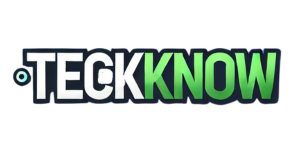JAKARTA, teckknow.com – In an era where technology underpins virtually every business process, IT Auditing has become a critical function for organizations aiming to safeguard assets, ensure compliance, and optimize their IT environment. By systematically evaluating technology practices, IT auditing helps identify vulnerabilities, validate controls, and drive continuous improvement. This article explores the fundamentals of IT Auditing, outlines key methodologies, and shares best practices for conducting effective technology audits.
What Is IT Auditing?
Definition of IT Auditing
IT Auditing is the process of examining and evaluating an organization’s information technology infrastructure, policies, and operations. The primary goal of IT auditing is to determine whether IT controls are adequately designed and operating effectively to support organizational objectives.
Objectives of IT Auditing
The main objectives of IT Auditing include:
- Evaluating the reliability and integrity of information systems.
- Assessing the effectiveness of security controls and data protection measures.
- Ensuring compliance with relevant laws, regulations, and standards.
- Identifying opportunities to improve IT governance, risk management, and operational efficiency.
Key Components of IT Auditing
Risk Assessment
A thorough risk assessment is the foundation of any successful IT Auditing engagement. Auditors identify and prioritize risks based on:
- The likelihood of threats exploiting vulnerabilities.
- The potential impact on business operations, reputation, and financial health.
Control Evaluation
Once risks are assessed, IT Auditing focuses on evaluating the design and implementation of IT controls, including:
- Access controls (authentication, authorization).
- Change management processes.
- Backup and recovery procedures.
- Network and infrastructure security controls.
Audit Planning
Effective IT Auditing begins with robust audit planning. Key planning activities include:
- Defining audit scope and objectives.
- Gathering documentation on IT systems, processes, and policies.
- Developing an audit program outlining tests and procedures.
IT Auditing Methodologies
COBIT Framework
The COBIT (Control Objectives for Information and Related Technologies) framework provides guidance on governance and management of enterprise IT. In IT Auditing, COBIT helps auditors:
- Map controls to business objectives.
- Benchmark IT processes against best practices.
- Identify gaps and recommend improvements.
ISO/IEC 27001
ISO/IEC 27001 is an international standard for information security management systems (ISMS). IT Auditing against ISO/IEC 27001 involves:
- Verifying the existence of a formal ISMS.
- Testing security policies, risk assessments, and treatment plans.
- Ensuring continuous monitoring and review of information security controls.
NIST SP 800-53
The NIST SP 800-53 catalog offers a comprehensive set of security and privacy controls for federal information systems. In IT Auditing, NIST controls are used to:
- Assess system-specific security requirements.
- Evaluate the effectiveness of technical, operational, and management controls.
Steps in Conducting an IT Audit
Preliminary Planning
During the preliminary planning phase of an IT Auditing engagement, auditors:
- Meet with stakeholders to understand organizational objectives.
- Review previous audit reports and risk assessments.
- Develop a detailed audit plan and timeline.
Fieldwork and Testing
Fieldwork is where auditors execute planned procedures:
- Interview IT personnel and observe processes in action.
- Perform technical tests (vulnerability scans, penetration tests).
- Examine system logs, configuration files, and access records.
Reporting and Follow-Up
After completing fieldwork, IT auditing concludes with:
- Drafting an audit report that summarizes findings, risks, and recommendations.
- Presenting results to management and key stakeholders.
- Tracking remediation efforts and conducting follow-up reviews.
Challenges in IT Auditing
Rapid Technological Change
One of the biggest challenges in IT Auditing is the pace of technological innovation. Auditors must continuously update their skills to assess emerging technologies such as cloud computing, Internet of Things (IoT), and artificial intelligence.
Compliance Complexity
Organizations often face a complex web of regulatory requirements. Effective IT auditing requires:
- Staying current with industry standards (GDPR, HIPAA, SOX).
- Harmonizing multiple compliance frameworks within a single audit approach.
Data Privacy Concerns
Protecting sensitive data is a top priority in IT auditing. Auditors must balance the need for sufficient audit evidence with respecting data privacy and confidentiality, ensuring:
- Proper handling of personally identifiable information (PII).
- Secure storage and transfer of audit artifacts.
Best Practices for Effective IT Auditing
Embrace Automation and Tools
Modern IT Auditing relies on automation to improve efficiency and accuracy. Top tools include:
- Automated vulnerability scanners (e.g., Nessus, Qualys).
- Security Information and Event Management (SIEM) platforms.
- Audit management software to streamline documentation and workflows.
Continuous Monitoring
Shift from periodic audits to a model of continuous auditing and monitoring:
- Implement real-time alerting on security events.
- Use dashboards to track key risk indicators (KRIs) and control performance metrics.
Stakeholder Communication
Clear communication throughout the IT auditing process ensures alignment and fosters collaboration:
- Conduct regular status updates with IT and business leaders.
- Translate technical findings into business impact language.
- Provide actionable recommendations and support remediation efforts.
Case Study: Successful IT Auditing Implementation
At a mid-sized financial services firm, IT Auditing was leveraged to enhance cybersecurity posture and regulatory compliance. Key outcomes included:
- Identification of unpatched systems and insecure configurations.
- Implementation of a formal patch management process, reducing vulnerability exposure by 75%.
- Establishment of an internal audit committee to oversee ongoing IT risk management.
This case underscores how targeted IT auditing can drive tangible improvements in security and governance.
Conclusion
IT Auditing plays a pivotal role in evaluating technology practices, safeguarding organizational assets, and ensuring compliance with ever-evolving regulations. By understanding core methodologies, embracing automation, and fostering strong Stakeholder relationships, Auditors can deliver High-value insights that drive continuous improvement. Incorporating these strategies will help your organization build Resilience, manage risk, and achieve IT Governance Excellence through effective IT Auditing.
Boost Your Proficiency: Learn from Our Expertise on Technology
Don’t Miss Our Latest Article on DevOps Practices!
